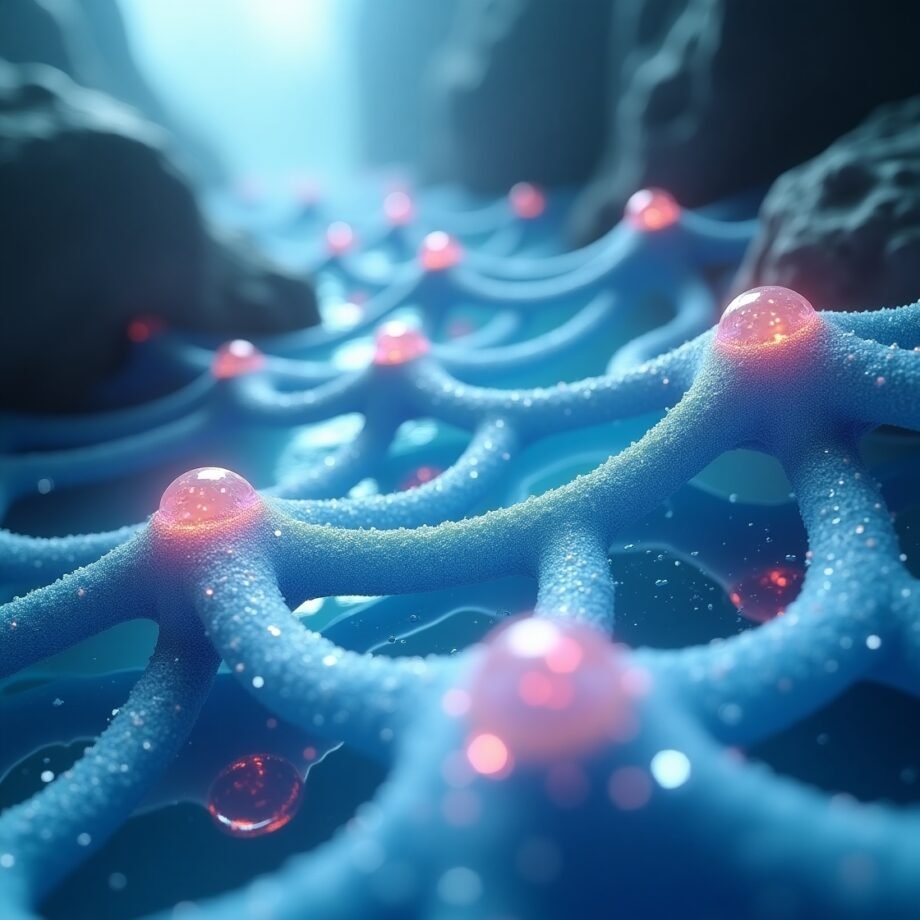Molecularly Imprinted Polymers (MIPs)
Molecularly Imprinted Polymers (MIPs) are synthetic polymers engineered with selective recognition sites for specific molecules. They work by creating “molecular memory” in the polymer matrix during synthesis. This gives MIPs the unique ability to selectively bind their target analyte, even in complex mixtures, making them a powerful tool in separation, sensing, and purification technologies.
Molecularly Imprinted Polymers Examples
Some notable examples of MIPs include:
- MIPs for antibiotics (removal of tetracycline and sulfonamides from water).
- Ion-imprinted polymers for selective adsorption of heavy metals like lead and cadmium.
- MIP-based sensors for detecting pesticides in food samples.
- MIPs for drug delivery in biomedical applications.
These examples highlight how versatile MIPs are across environmental, pharmaceutical, and industrial sectors.

What is Molecularly Imprinted Polymers?
Molecularly Imprinted Polymers are materials synthesized using a template molecule, functional monomers, cross-linkers, and solvents. Once the template is removed, the polymer retains cavities that are complementary in shape and chemical functionality to the original molecule. These “molecular fingerprints” allow MIPs to act like artificial receptors—similar to antibodies, but more stable and cost-effective.
Molecularly Imprinted Polymers Application
MIPs are applied in a wide range of fields, such as:
- Environmental monitoring and water treatment – for removal of pharmaceuticals, pesticides, dyes, and heavy metals.
- Pharmaceutical industry – in drug delivery systems, purification, and chiral separation.
- Food safety – detecting residues like veterinary drugs and mycotoxins.
- Clinical diagnostics – capturing biomarkers for disease detection.
Molecularly Imprinted Polymers Biosensors
One of the fastest-growing applications of MIPs is in biosensors. MIP-based biosensors combine the high selectivity of MIPs with transducers (electrochemical, optical, or piezoelectric) to detect target analytes at very low concentrations.
Examples include:
- Electrochemical MIP sensors for early cancer biomarkers.
- Optical MIP sensors for pesticide detection in agriculture.
- Magnetic MIPs that enable easy separation and reuse in biosensing platforms.
MIP biosensors are valued for being stable, reusable, and cost-effective compared to biological receptors like antibodies.
What are the Uses of Molecularly Imprinted Polymers?
The main uses of MIPs include:
- Selective removal of contaminants from wastewater.
- Rapid and reliable detection of hazardous chemicals in food.
- Chiral separation in pharmaceuticals.
- Controlled drug delivery in biomedical applications.
- Developing low-cost, robust, and reusable biosensors.

What are the Advantages and Disadvantages of Molecularly Imprinted Polymers?
Advantages
- High Selectivity: Designed to recognize and bind specific molecules.
- Stability: Resistant to heat, pH changes, and organic solvents.
- Cost-Effective: Cheaper than natural receptors like antibodies.
- Reusability: Can be regenerated and reused multiple times.
- Wide Applicability: Useful in environmental, biomedical, and industrial sectors.
Disadvantages
- Template Leakage: Traces of the template molecule may remain after synthesis.
- Scalability Issues: Large-scale production for industrial use is challenging.
- Binding Kinetics: Sometimes slower compared to natural receptors.
- Multi-Analyte Systems: Designing MIPs for complex mixtures can be difficult.
- Non-Specific Binding: Risk of cross-reactivity with structurally similar compounds.
What are the Applications of MIPs?
MIPs have growing applications in:
- Wastewater treatment – selective removal of pharmaceuticals and pesticides.
- Healthcare – biosensors and controlled drug release.
- Food industry – detection of toxins and chemical residues.
- Industrial separation processes – purifying chemicals and solvents.
- Environmental monitoring – capturing pollutants for safer ecosystems.
Future Potential of Molecularly Imprinted Polymers
The future of Molecularly Imprinted Polymers (MIPs) is highly promising, with research pointing toward new directions that could overcome current limitations and unlock broader applications.
- Nano-MIPs for Enhanced Performance
Miniaturization through nanotechnology is making MIPs more efficient. Nano-MIPs offer a higher surface area, faster binding kinetics, and improved sensitivity, making them suitable for advanced biosensors and rapid water purification systems. - Magnetic MIPs for Easy Separation
Incorporating magnetic nanoparticles into MIPs allows for quick separation from water or biological samples using a simple magnetic field. This innovation reduces operational costs and enhances reusability, especially in wastewater treatment and food safety testing. - Multi-Template and Multi-Functional MIPs
Traditional MIPs are often selective to a single molecule, but real-world environments contain mixtures of contaminants. Future MIP designs aim to incorporate multiple templates or functional groups, enabling them to capture different pollutants at the same time. This approach is particularly important for treating complex wastewater and detecting multiple biomarkers in healthcare. - Integration with Smart Devices and IoT
MIP-based sensors can be integrated with Internet of Things (IoT) devices to provide real-time monitoring of pollutants in water, air, and food. This could transform environmental surveillance, allowing for continuous, low-cost, and decentralized monitoring. - Eco-Friendly and Green Synthesis
One challenge with MIP production is the use of toxic solvents and chemicals. Researchers are focusing on green chemistry approaches, including water-based polymerization and biodegradable monomers, to make MIPs more sustainable and environmentally friendly. - Biomedical Applications
In the healthcare sector, MIPs are expected to play a major role in drug delivery systems, diagnostic tools, and targeted therapies. For example, MIPs designed to mimic biological receptors could replace expensive antibodies in diagnostic assays, making healthcare more affordable. - Industrial Scale-Up and Commercialization
With increasing demand for selective materials in industries like pharmaceuticals, food safety, and environmental protection, there is strong potential for commercial MIP products. Advancements in scalable synthesis techniques could make MIPs widely available for industrial wastewater treatment and large-scale separation processes.
Overall Outlook
Molecularly Imprinted Polymers (MIPs) are more than just an innovative scientific concept—they represent a revolutionary class of smart materials with the power to reshape multiple industries. Their unmatched selectivity, stability under harsh conditions, and cost-effectiveness give them a distinct advantage over traditional treatment and sensing methods. From removing pharmaceuticals and pesticides in wastewater to acting as biosensors in medical diagnostics, MIPs are proving their versatility and reliability.
While challenges such as template leakage, scalability, and non-specific binding remain, ongoing research is steadily overcoming these barriers. The development of nano-MIPs, magnetic MIPs, and multi-functional polymers, coupled with advances in green synthesis and IoT integration, is opening doors to broader real-world applications.
Looking ahead, MIPs have the potential to become mainstream solutions for global challenges—ensuring safer drinking water, advancing affordable healthcare, enabling sustainable industrial processes, and protecting ecosystems. With continuous innovation and cross-disciplinary collaboration, MIPs will play a pivotal role in building a smarter, greener, and healthier future for all.









Hey there! I’ve been reading your website for a while now and finally got the bravery
to go ahead and give you a shout out from Houston Texas!
Just wanted to say keep up the good job!
This article provides a clear and engaging overview of MIPs, effectively explaining their structure, diverse applications, and future potential. The examples make the technology relatable, and the focus on overcoming challenges gives a sense of progress and promise.crazy cattle 3d online